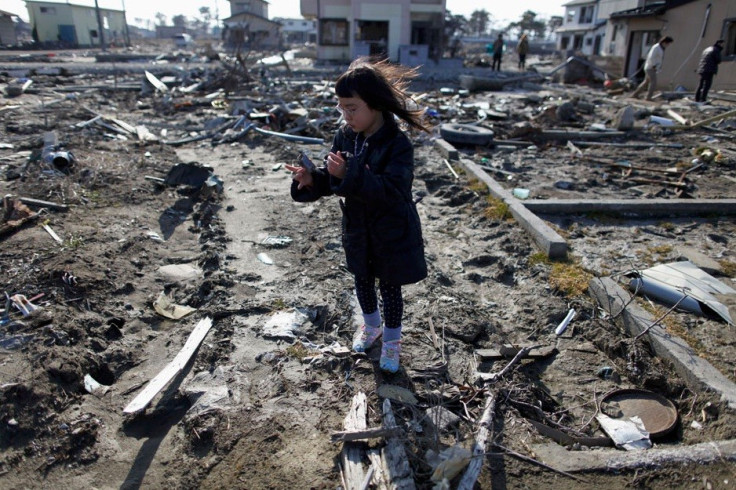The 5 biggest megathrust earthquakes recorded in modern history
Ten years since the Boxing Day Tsunami, we look at the five most destructive earthquakes in history

Ten years ago, the world watched horrified as scenes of devastation unfolded across the countries of the Indian Ocean.
The 2004 Indian Ocean earthquake was one of the most catastrophic ever recorded in history, killing over 230,000 people in 14 countries and leaving a staggering five million people in need of humanitarian assistance in the immediate aftermath.
With a magnitude of 9.1 to 9.3, the undersea megathrust earthquake, a very large earthquake that occurs in a subduction zone, is one of the largest ever recorded. It was also one of longest durations of faulting ever observed, lasting between 8.3 and 10 minutes.
The energy released from the Earth's surface by the earthquake and tsunami was estimated to be equivalent to 26 megatons of TNT – over 1,500 times that of the Hiroshima atomic bomb. It was so powerful it shifted the Earth's rotation.
IBTimes UK looks at the five most powerful and devastating megathrust earthquakes in modern history.
Valdivia earthquake, 22 May 1960

The Great Chilean Earthquake was the most powerful earthquake ever recorded, rating 9.5 on the moment magnitude scale and lasting 10 minutes. The epicentre was near Lumaco, south of Santiago, sending an enormous tsunami that battered the coast of Chile with waves up to 25 metres high.
The tsunami roared across the Pacific Ocean, devastating Hilo in Hawaii and reaching as far as Japan, the Philippines, southeast Australia, eastern New Zealand and the Aleutian Islands.
According to the United States Geological Survey, up to 5,700 people were killed in the disaster, but other sources claim the death toll was higher.
Indian Ocean Earthquake, 26 December 2004

The violent movement of the Earth's tectonic plates displaced an enormous amount of water, an estimated 30 cubic kilometres, which triggered huge tsunami waves. The waves radiated outwards along the 1,000-mile length of the rupture, sending the waves as far as Chile and the Arctic.
As well as the sideways movement of the plates, the global sea level was permanently raised by an estimated 0.1 mm, due to the elevating of the sea floor.
Measured in lives lost, the tsunami was the single worst in history. Indonesia and Sri Lanka were the worst-affected areas, followed by Thailand and India. The tsunami caused serious damage and deaths as far away as Rooi Els in South Africa, around 5,000 miles from the epicentre of the earthquake, where eight people died as a result of high sea levels and waves.
Alaska Earthquake, 27 March 1964

At 5.36pm Alaska Standard Time, a fault between the Pacific and North American plates ruptured near College Fjord in Prince William Sound. Known as the Good Friday Earthquake, it measured around 9.2 magnitude across south-central Alaska and lasted nearly five minutes, causing soil liquefaction, ground fissures, collapsing structures and tsunamis that led to around 139 deaths.
The aftershock zone of the earthquake reached around 250 km wide, extending from Prince William Sound to the south-western edge of Kodiak Island. Smaller aftershocks continued for over a year.
However, the death toll for this magnitude of earthquake was extremely small due to low population density, the time of day and the fact that many of the buildings were constructed out of wood.
Tohoku Earthquake and tsunami, 11 March 2011

The 2011 earthquake off the Pacific coast of Tohoku measured magnitude 9.0, the most powerful earthquake to hit Japan. It triggered powerful tsunami waves that reached heights of up to 40.5 metres in Tohoku's Iwate Prefecture. The earthquake moved Honshu, Japan's largest island, 2.4 metres to the east and shifted the Earth on its axis by between 10cm and 25cm.
A Japanese National Police Agency report confirmed 15,889 deaths, over 6,000 injuries and over 2,600 missing. The World Bank's estimated economic cost of the earthquake was $235bn, making it the costliest natural disaster in world history.
As well as destroying buildings, the tsunami caused nuclear accidents, most notably the level seven meltdowns at three reactors in the Fukushima Daiichi Nuclear Power Plant complex - the largest nuclear incident since the Chernobyl disaster in April 1986.
Kamchatka Earthquake, 4 November 1952

A magnitude 9.0 earthquake off the coast of Kamchatka Peninsula caused a Pacific-wide tsunami, causing considerable damage and loss of life in the Kuril Islands and other areas of Russia's Far East. The tsunami was recorded in the Hawaiian Islands, as well as Peru and Chile, reaching New Zealand, Alaska and California.
The tsunami caused severe damage in the peninsula itself, before roaring over the Pacific. In Hawaii, the waves destroyed boats and telephone lines.
© Copyright IBTimes 2025. All rights reserved.




















